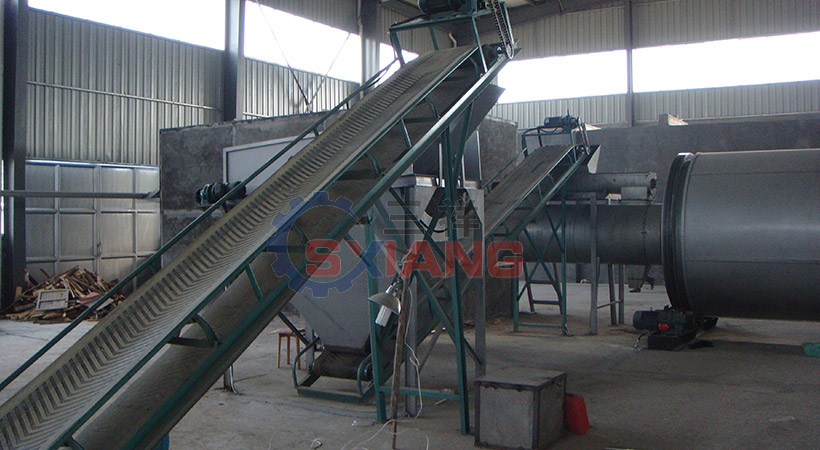
Product introduction: the sawdust dryer continuously adds the powdery wet sawdust into the drying pipe by screw conveyor. In the transportation and dispersion of high-speed hot air flow, the moisture in wet materials is evaporated to obtain powdery or granular dry products. It is mainly composed of air heater, feeder, air dryer, cyclone separator, fan, etc. The advantages of this sawdust dryer are stable operation, large operation flexibility, strong adaptability and large output.
Working principle: sawdust dryer: it includes heat generating furnace, feed port, rotating cylinder, filter cylinder, material conveying pipe, cooling cylinder and discharge port. The rotating cylinder is located on the driving roller. The driving roller drives the rotating cylinder to rotate at a low speed by motor and deceleration drive. A feed port is set between the heat generating furnace and the rotating cylinder, a frying blade is set in the rotating cylinder, and a baffle is set at the connection between the rotating cylinder and the filter cylinder, A small hole is opened on the baffle, one end of the filter cylinder is connected with the rotating cylinder, the other end is connected with the material conveying pipe, a stop is set in the filter cylinder, a slag discharge hole is set at the bottom of the filter cylinder, one end of the cooling cylinder is connected with the material conveying pipe through a blower, and the other end is connected with the discharge port. Because the saw dust dryer adopts the above structure, the saw dust can be fully dried in the rotating cylinder, and the saw dust can be fully dispersed again before entering the material conveying pipe, so that the water evaporates quickly. The stop can block the impurities in the saw dust and ensure the quality of the saw dust entering the material conveying pipe. The sawdust enters the sawdust dryer, and the spray pipe and the rotary cylinder work together. The materials boil and fluidize in the cylinder, and the hot air fully contacts the materials to complete the drying.
Applicable materials: sawdust dryer is applicable to sawdust, bamboo chips, wood chips, straw, vine man, stem, bagasse, fruit shell, palm silk, coconut shell, Salix, other combustible wastes, etc.
Performance characteristics:
1. Automatic control can ensure that the moisture of dried sawdust is uniform and stable
2. Automatic stone removal and iron removal can ensure that the impurities of the dried sawdust do not enter the next process
3. The investment required for equipment is 1 / 6 of foreign imported products
4. The thermal efficiency of cylinder self insulation is more than 70% (the thermal efficiency of traditional single cylinder dryer is only 35%), and the thermal efficiency is increased by more than 50%
5. Tail transmission is adopted, which makes the transmission more stable and reliable; Completely change the phenomenon that the supporting wheel often slips during rotation and affects production
6. Compared with the single drum dryer, the floor area is reduced by about 50%, the civil construction investment is reduced by about 50%, and the power consumption is reduced by 60%
7. A variety of circumferential lifting materials are combined and distributed to effectively control the drying time. Good drying effect
8. The required final moisture index can be easily adjusted and controlled according to user requirements
9. Variable frequency speed regulation is adopted to control the material flow, which can easily adjust the required final moisture index according to the needs of users
10. The outlet temperature is low and the dust removal equipment has a long service time, which can be produced continuously for the next process
11. It is equipped with a new energy-saving hot blast stove, which is energy-saving, thermal control, simple operation, and the coal consumption is reduced by about 60%
& nbsp;& nbsp;& nbsp;& nbsp; 12. The drying time is short and the drying intensity is high. Due to the high dispersion of materials in the air flow, all surfaces of particles are actively the effective area of drying.